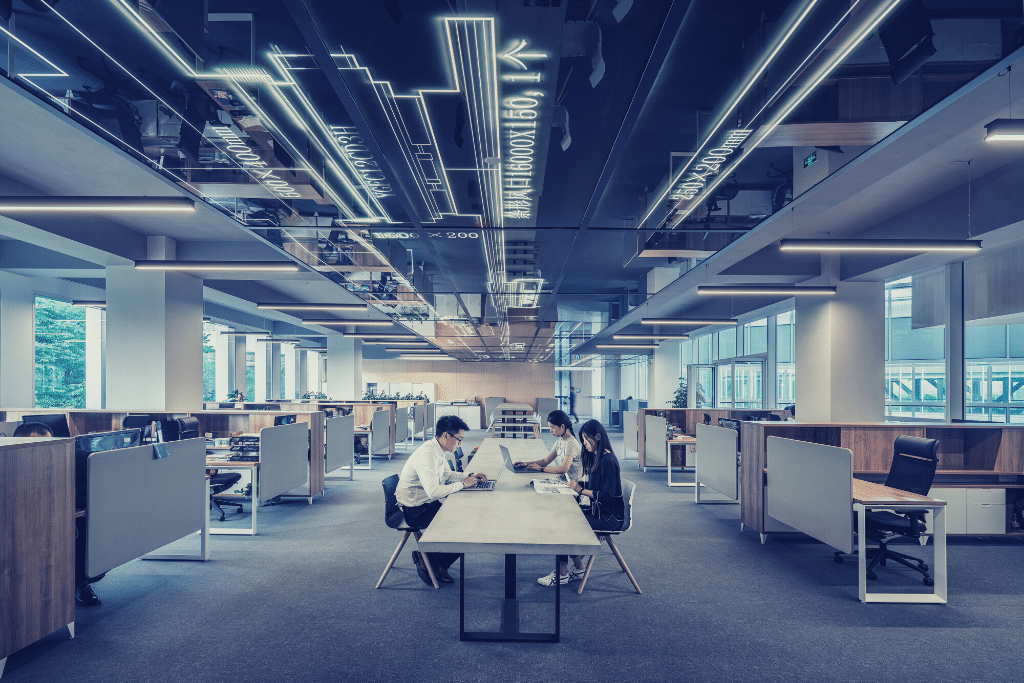The rise of remote work, also known as telecommuting, is unstoppable and inevitable. In the United States alone, the number of remote workers skyrocketed by 159 percent between 2005 and 2017. In the meantime, by now, millennials are the largest working group in many parts of the world. The disruptive members of Generation Z are following the course. It’s no secret that these demographic groups tend to love the flexibility, prioritize sustainability, and have an evolving attitude to work and life balance.
With the combination of demographic changes and rising technologies, the work culture around the world is going through a revolution. It’s possible to see the manifold reflections of these changes in the office design trends of 2020.
Throughout 2020 and beyond, we expect to see five of the following trends to take the world of office design by storm.
1. Greater Sense of Community
For the 2020’s worker, an office is no longer just a place to get some work done for a paycheck. Especially when it’s possible to complete many of the tasks remotely, the meaning of an office morphs towards a supportive environment to connect with great minds to spark debates.
Hence, a greater sense of community and an environment to inspire collaboration is a dominant office design theme in 2020. Inviting and cozy meeting spaces that are more typical settings to stylish hotels or restaurants will be increasingly more visible.
2. Sustainable and Back to Nature
As the global debate about sustainability is louder than ever, office design trends of 2020 echo it too. Many companies already enjoy the benefits of energy-efficient and smart buildings. However, as a greener design boosts employees’ health, well-being, and morale, more of them are tapping into biophilic design solutions like vertical gardens, nature-inspired floors, or live plants.
Likewise, offices will boast more details like vegan, organic, or recycled fabrics, as well as natural wood and stone features.
3. Hybrid Seating Options
When the open-plan offices started to replace the cubicles at the beginning of this century, many hailed them as a solution to boost productivity and collaboration. However, recent studies show that open-plan offices don’t suit everyone.
When neither cubicles nor an open-plan design work for employees, an accelerating number of companies favor a hybrid design to let their employees decide.
Diverse seating options like private nooks, standing desks, or cafe-style high tables in 2020 will allow workers to find the ideal setting for them to thrive.
4. Informal Non-Work Zones
Research shows that younger generations identify fiercely with their work. Since work and professional success is a top priority, they want to create a lifestyle with smooth work-life integration, rather than a rigid 9-5 schedule. This propels the demand for greater informality at the workplace.
Tech giants like Google and Facebook popularized the concept of “adult playgrounds” on their campuses. While it’s unlikely for most companies to go the same length, 2020 will continue to see informal non-work zones featuring ping-pong tables, pool, musical instruments, or board games.
5. Flexible and Secure Access
In 2020, there will be 3.5 billion smartphone users globally, which will optimize and evolve the work cultures further.
As work-life integration is replacing rigid schedules, more offices are embracing the idea of providing flexible and personalized access to their workers.
New access solutions allow employees to enter their offices securely and efficiently, using their mobile phones. This eliminates the hassle of carrying keys or key cards, as well as staffing the reception for 24 hours.
In 2020 and beyond, a rising number of companies will cater to their employees’ needs for convenience and flexibility by utilizing mobile entrance solutions.






